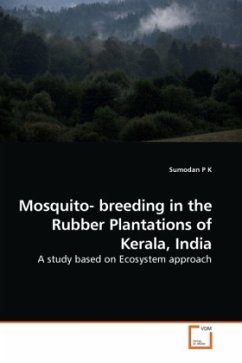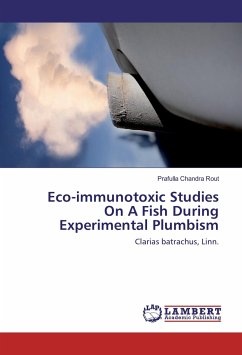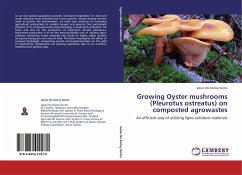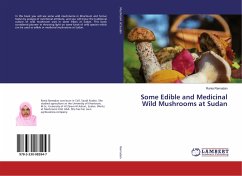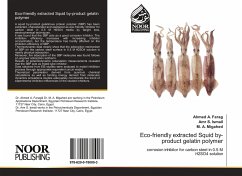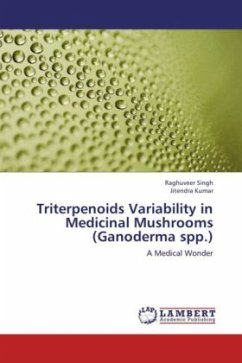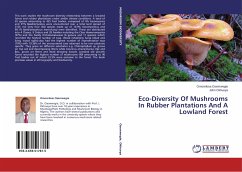
Eco-Diversity Of Mushrooms In Rubber Plantations And A Lowland Forest
Versandkostenfrei!
Versandfertig in 6-10 Tagen
47,99 €
inkl. MwSt.

PAYBACK Punkte
24 °P sammeln!
This work studies the mushroom diversity relationship between a lowland forest and rubber plantations under similar climate conditions. A total of 93 species amounting to 425 fruit bodies, composed of 9% Ascomycetes and 91% Basidiomycetes were encountered over a total land spread of 3125 m2. Sixty four (64) species made up of 10.9% Ascomycetous and 89.1% Basidiomycetous macrofungi were identified. These are distributed into 4 Classes, 9 Orders and 28 Families including the Class Hymenomycetes (57%) and the Family Tricholomataceae (6 genera and 11 species) which recorded the highest number of t...
This work studies the mushroom diversity relationship between a lowland forest and rubber plantations under similar climate conditions. A total of 93 species amounting to 425 fruit bodies, composed of 9% Ascomycetes and 91% Basidiomycetes were encountered over a total land spread of 3125 m2. Sixty four (64) species made up of 10.9% Ascomycetous and 89.1% Basidiomycetous macrofungi were identified. These are distributed into 4 Classes, 9 Orders and 28 Families including the Class Hymenomycetes (57%) and the Family Tricholomataceae (6 genera and 11 species) which recorded the highest number of taxa. Wood inhabiting fungi (dead and living wood types) also had the highest number of representative taxa (70%) with 19.36% of the encountered taxa observed to be non-substrate specific. They grow on different substrates e.g. Chlorophyllum sp. grows on top soil and decomposing litters while Coprinus atramentarius Ulje and Bas., grows on litters and dead decaying woods. Lowland old growth forest recorded the highest number of mushrooms (40) amounting to 90 fruit bodies out of which 22.5% were exclusive to the forest. The book promises values in ethnography and biodiversity.



